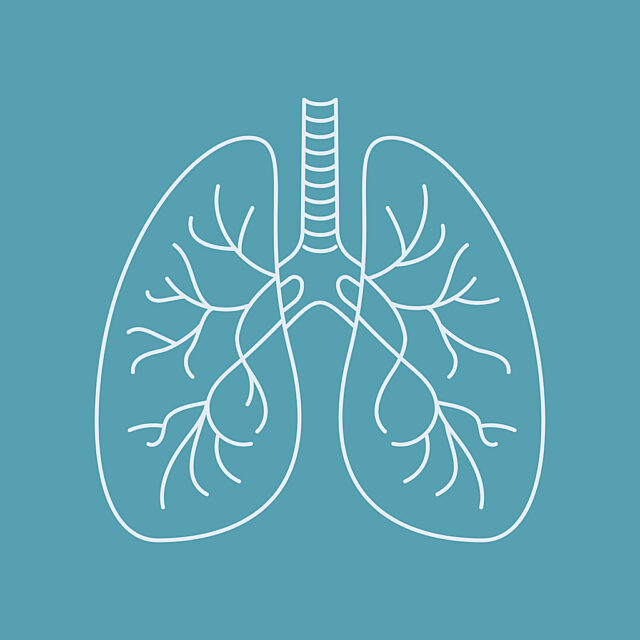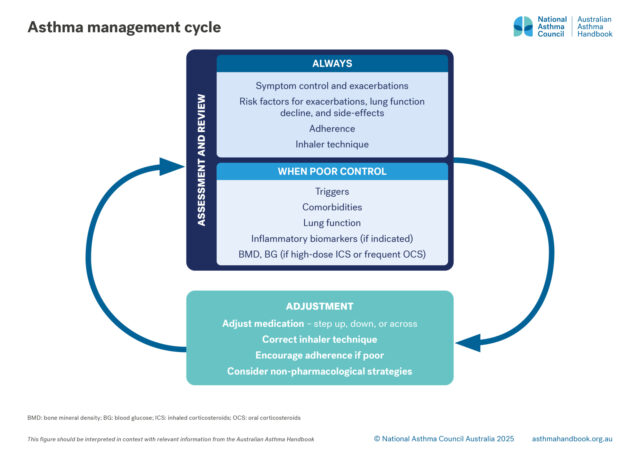Australian Asthma Handbook
The National Guidelines for Health Professionals
Cite
Overall goals for the Australian population:
Overall goals for individual patients:
Asthma management in adults is based on:
Asthma treatment in adults and adolescents is based on inhaled medication:
1. ICS to reduce airway inflammation and prevent exacerbations (with other inhaled medicines, as indicated)
2. rapid-acting bronchodilators to manage symptoms.
Both these functions can be performed by a single inhaler, or the patient can have a separate inhaler for each function.
ICSs can be administered in either of two ways:
Rapid-acting bronchodilators for relief of symptoms can be administered in either of two ways:

Definitions, description, and severity classifications for assessment of asthma exacerbations and acute asthma.

Principles of management
How to assess asthma control and severity. Risk factors for asthma exacerbations and what to include at check-ups for…

Principles of management
How to choose and use asthma inhalers for adults and adolescents.

Principles of management
How to equip and coach patients to manage their own asthma, including exacerbations.